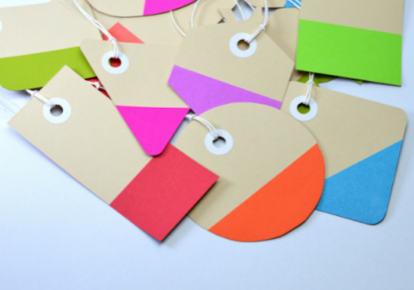
E-commerce pricing psychology is one of those tricky things that every e-merchant struggles and experiments with over time. We recently encountered a huge resource on pricing psychology that explores in exhaustive detail all the most relevant social psychiatry research about the effect of pricing displays on purchasing decisions, both off and online.
Psych marketing expert Nick Kolenda’s article on Pricing Psychology has no fewer than 42 tips for merchants looking to attract a buyer’s psyche, rather than discouraging it.
We’ve distilled the best of those into just six tips we think are especially useful for e-commerce merchants.
1: Subtract 1 from the left digit
We see it all the time. “Charm pricing” means pricing something at, for example, $24.99 instead of $25.00, or sometimes $1.95 instead of $2.00.
The psychology of this difference is the found in the left digit, not the right one. Even if someone knows intellectually that it’s only a penny different in price, on an emotional level they can still tell themselves it’s under $25.
The left digit so important because the reader perceives it as the major element of the price.
According to Kolenda, our brains encode numbers rapidly, and unconsciously. The size of a number is mentally encoded before we’ve even finished reading it.
Bonus Tip: Reducing the font size of the “cents” digits draws more attention to the smaller left digit.
2: Display Prices in a Small Font Size
Your brain has a universal conceptualization of size. It’s easy for the brain to get confused between visual and numerical magnitude.
Your actual price can seem smaller if it is displayed in a smaller font size..
You can position larger visual or graphic elements around your price in the page layout. This gives the displayed price a smaller visual magnitude. Psychologically, this is translated to a smaller numerical value as well.
The reverse works for discounts. Display those numerals in a large font size, and the discounted price will seem even more discounted.
Bonus tip: Don’t use the word “HIGH” (or equivalent) near a displayed price. The brain will associate the adjective with the numbers next to it.
3. Know when (and when not) to use round numbers.
“Rounded-ness” helps numbers to be fluently processed. Un-rounded numbers are disfluent, taking more processing time with the right side of the brain.
Researchers cited by Kolenda found that round prices — because they are fluently processed — work better for emotional purchases. Being able to process the number quickly can make the price “just feel right.”
The opposite is also true. People use more of their right cerebral cortex to process non-rounded prices. Subconsciously, those prices seem more fitting with rational purchases.
So for emotional purchases – say, cosmetics or home decor, keep it simple.
But for rational purchases like tools or appliances, give them a longer number to throw in with their decision making.
4. Price first, or product first? It depends on the product category.
Displaying products first causes buyers to base purchase decisions more on product qualities.
Displaying prices first causes more people to base their purchase decision on an item’s value for the price.
For luxury products, product qualities are the prime consideration. You want the price to be secondary. Display the product before the price in that case.
The opposite is true for utilitarian products like a pack of AA batteries, or machine parts. People are more likely to buy those products if they encounter the price first because they will tend to appreciate the economic value of the purchase.
5. Visually contrast regular vs sale prices.
Comparing your prices and showing how they cost more elsewhere motivates people to buy your product because for many, it spares them the price research.
You can optimize that comparison further.
If you visually distinguish your price from a reference price by using a different size, font, color or some combination of those three, you trigger a fluency effect. Consumers will mis-attribute that visual distinction to a greater numerical distinction.
That fluency effect not only works with font color, but it also works with physical distance. Positioning your price further from the reference price makes the brain perceive a greater numerical difference, and use a smaller font size for yours to make the price itself seem smaller.
6. Reduce the frictions (and pains) of paying.
Whenever we purchase something, we feel what’s called the “pain of paying.”
Uber disrupted the taxi industry in several ways, but one of the most significant, from an e-commerce standpoint, was by removing the pain and friction of handing over a credit card and signing a receipt, or handing over cash out of pocket. No meter telling you how much you’re spending every half minute. No physical payments. Everything is automatically charged to your card’s saved payment information in the app. Just add a tip on your screen, and go. So much less pain!
Google Shopping has addressed payment friction for online shopping in the same ways. Google users can store payment information in their Google account settings, for use throughout the Google ecosystem. In the past two years Google has streamlined, upgraded and opened the doors to all merchants who want to sign up for Google Shopping. Consumers searching for products via Google are taken directly to the merchant’s Google-hosted product page and can check out instantly, using their stored payment and address info from Google. Frictions gone. Pain deferred.
Shoppingfeed is a certified Partner in Google’s Shopping platform, as well as in every major online marketplace worldwide.




